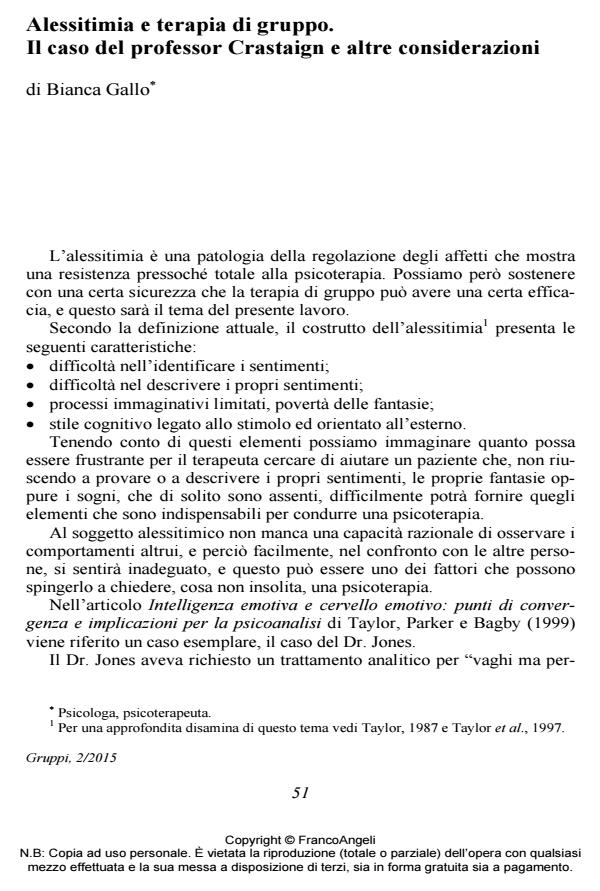Alexithymia and group therapy: the case of professor Crastaign and other remarks
Journal title GRUPPI
Author/s Bianca Gallo
Publishing Year 2016 Issue 2015/2
Language Italian Pages 10 P. 51-60 File size 84 KB
DOI 10.3280/GRU2015-002005
DOI is like a bar code for intellectual property: to have more infomation
click here
Below, you can see the article first page
If you want to buy this article in PDF format, you can do it, following the instructions to buy download credits

FrancoAngeli is member of Publishers International Linking Association, Inc (PILA), a not-for-profit association which run the CrossRef service enabling links to and from online scholarly content.
Alexithymia is a disorder of affection-regulation. In tackling this theme, the author present a literary and a clinical case which show that group psychotherapy, as opposed to the individual psychotherapy, can produce positive effects. Indeed group-therapy can allow alexithyimia sufferers to re-build mental functions not yet fully developed, through group specific phenomena. As mental functions have a neural correlate, the author examines the possible causes of this malfunctioning, both through the recent acquisitions of neuroscience and by referring to the theories of Bion and other authors.
Keywords: Alexithymia, group therapy, affection regulation, emotions, alpha function, mirroring.
Bianca Gallo, Alessitimia e terapia di gruppo. Il caso del professor Crastaign e altre considerazioni in "GRUPPI" 2/2015, pp 51-60, DOI: 10.3280/GRU2015-002005